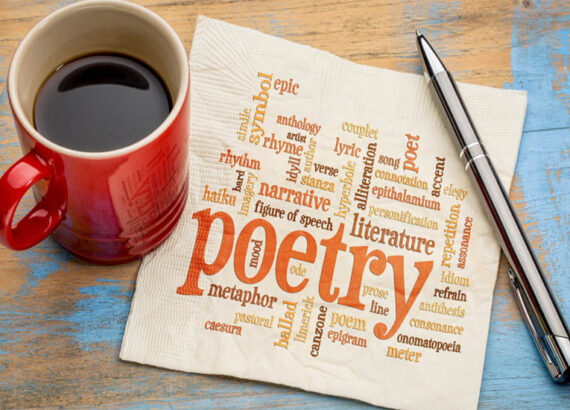How to Write a Poetry: Top Rules for Poetry Writers

How to Write Poetry: Top Rules for Poetry Writers
Poetry, with its ability to evoke emotions, paint vivid images, and capture the essence of the human experience, has been a cherished art form for centuries. For aspiring poets, diving into the world of poetry writing can be both exhilarating and daunting. Whether you are a beginner taking your first steps into the realm of verse or someone looking to refine their poetic skills, this article will provide you with a comprehensive guide on how to write poetry. Through a series of ten rules, we will explore the key principles, techniques, and creative strategies that can help you embark on your poetic journey. So, let’s unravel the beauty of words, embrace creativity, and discover the art of crafting compelling poetry.
1. Introduction to Poetry Writing
The Beauty and Power of Poetry
Poetry, ah, is the beautiful art of arranging words in a way that tugs at our heartstrings and tickles our imagination. Poetry has been enchanting souls for centuries, captivating readers with its lyrical beauty and the power to convey emotions in a way that prose simply can’t. It’s like a magic spell woven with words, transporting us to different worlds and making us see things in a whole new light.
Why Write Poetry?
“Why should I bother with poetry?” you may ask. Well, dear reader, the answer is simple: because it’s downright enjoyable! Writing poetry allows you to express yourself freely, unbound by the shackles of grammar rules and structure. It’s a creative outlet that unleashes your inner wordsmith and lets you paint vivid pictures with your pen. Plus, it’s a fantastic way to process your thoughts, release pent-up emotions, and explore topics that touch your soul. So, grab a pen, and let’s dive into the enchanting world of poetry!
2. Understanding the Essence of Poetry
Defining Poetry
What is poetry, you ask? Well, it’s like catching a firefly in a jar. It’s both elusive and mesmerizing. Poetry is the art of distilling complex emotions, fleeting moments, and profound experiences into a few carefully chosen words. It’s like a puzzle, where every line and every word serves a purpose and contributes to the bigger picture. In essence, poetry is the language of the heart — a symphony of sounds, rhythms, and emotions that dances off the page.
Exploring the Elements of Poetry
Now that we know what poetry is, let’s dive into its building blocks. Poetry is all about playing with language and using its various tools to create an impact. From imagery that paints vivid mental pictures to metaphors that add layers of meaning, poetry has an arsenal of literary devices at its disposal. Rhythm and meter give poetry its musical quality, while line breaks and stanzas add structure and visual appeal. So, buckle up as we explore these poetic elements and learn how to wield them with finesse!

3. Rule #1: Embrace Creative Expression
Finding Inspiration for Your Poetry
In the vast expanse of the universe, inspiration can be found in the most unexpected places. Whether it’s the chirping of birds at dawn, the smell of freshly brewed coffee, or a fleeting moment of connection with a stranger, allow the world around you to breathe life into your poetry. Open your eyes, your heart, and even your ears (yes, poetry can be spoken too!) to the myriad of experiences and emotions that surround you. The more you embrace the beauty of everyday life, the more your poetry will flourish.
Cultivating Your Unique Voice
Every poet has a distinct voice, and it’s time to unleash yours! Don’t worry about sounding like the great poets of the past or trying to imitate someone else’s style. Embrace your quirks, your perspectives, and your own idiosyncrasies. Write without fear or inhibition. Let your true self shine through your words, and soon you’ll find that your poetry becomes an extension of your soul. So, grab that pen, take a deep breath, and let your voice soar!
4. Rule #2: Master the Art of Imagery and Metaphor
Bringing Vivid Imagery to Your Poetry
Imagery is the secret spice that gives your poetry that extra oomph! Instead of telling your readers about something, show them. Use colorful, sensory language to paint a picture in their minds. Let them taste, smell, hear, and feel what you’re experiencing. Whether it’s describing the velvety texture of a rose petal or the salty breeze kissing your face by the ocean, let your words awaken the senses and transport your readers to the heart of your poetic world.
Utilizing Metaphors to Deepen Meaning
Metaphors are poetic gold mines. They take ordinary things and infuse them with deeper meaning and symbolism. Through metaphors, you can make connections, evoke emotions, and add layers of depth to your poetry. Compare a heartache to a stormy sea or a ray of hope to a flickering candle. Let your imagination run wild and let metaphors be the bridge between the tangible and the abstract. Mastering the art of metaphor will turn your poems into tiny universes of profound revelation.
Now that we’ve covered the first two rules of poetry writing, go forth and embrace your creativity, open your heart to inspiration, and paint your world with vivid imagery and metaphors. Remember, poetry is not about following strict rules or sounding “poetic.” It’s about expressing yourself, playing with words, and having a little fun along the way. So, let your pen dance on the paper and let the poet within you shine!

5. Rule #3: Experiment with Different Poetic Forms and Structures
Exploring Traditional Poetic Forms
When it comes to poetry, there are countless forms and structures to play around with. Traditional poetic forms like sonnets, haikus, and villanelles have been used for centuries and can add a touch of elegance to your poetry. So why not give them a whirl?
Challenge yourself to try out different rhyme schemes or syllable counts, and see how it affects the flow and meaning of your poem. You might find that the constraints of traditional forms actually spark creativity and help you explore new ideas.
Creating Free Verse and Innovative Structures
On the other end of the spectrum, there’s free verse, where you have the freedom to let your words flow without the limitations of rhyme or meter. This allows you to experiment with line breaks, punctuation, and formatting, giving your poem a unique visual and auditory impact.
But don’t stop there! You can also create your own innovative structures by combining elements of different forms or inventing entirely new ones. Remember, poetry is all about expressing yourself, so don’t be afraid to break the rules and make your own.
6. Rule #4: Pay Attention to Rhythm and Sound
Understanding the Importance of Rhythm
Rhythm is the heartbeat of poetry. It sets the pace, creates a musicality, and can draw readers deeper into your words. Whether you’re writing in a traditional form or free verse, paying attention to rhythm can elevate your poetry to new heights.
Think about the beats, stresses, and pauses within your lines. Experiment with short and long lines, vary the syllables and play around with the pace. A well-crafted rhythm can make your poem come alive and leave a lasting impression on your readers.
Using Sound Devices to Enhance Your Poetry
In addition to rhythm, sound devices like alliteration, assonance, and onomatopoeia can add a layer of richness to your poetry. Alliteration, or the repetition of consonant sounds, can create a pleasing melody. Assonance, the repetition of vowel sounds, can add a musical quality. And onomatopoeia, where words imitate sounds, can bring your poetry to life.
So, don’t be shy to sprinkle these sound devices throughout your work. Just remember to use them intentionally and sparingly, so they enhance rather than overwhelm your poem.

7. Rule #5: Craft Powerful and Evocative Language
Choosing Words with Precision and Impact
Words have power, and in poetry, every word matters. Choose your words with precision and impact to create vivid imagery and evoke emotions in your readers. Use strong verbs, vibrant adjectives, and specific nouns to paint a picture with your words.
Don’t settle for the ordinary; push yourself to find fresh and unexpected language that will leave a lasting impression. And remember, simplicity can be just as powerful as complexity, so don’t let the Thesaurus intimidate you!
Creating Emotional Resonance through Language
Poetry is a powerful medium for expressing and evoking emotions. So, take advantage of it! Delve into the depths of your emotions and find ways to convey them authentically through your language. Whether it’s love, heartbreak, joy, or sadness, your words should resonate with your readers and touch their souls.
Metaphors, similes, and other figurative language can be your allies in this quest. They help us see the world anew and make connections that stir our emotions. So, be bold, be vulnerable, and let your words create an emotional symphony.

8. Rule #6: Explore Themes and Emotions
Identifying Themes for Your Poetry
Themes are the underlying ideas or messages in your poetry. They give your work depth and meaning, allowing readers to connect on a deeper level. So, take some time to explore the themes that resonate with you.
What are the topics, issues, or experiences that ignite your passion or touch your heart? Whether it’s love, nature, social justice, or personal growth, find those themes that resonate with you and shape your poetry around them. By doing so, your words will carry a stronger impact.
Conveying Emotions in Poetry
Emotions are the fuel that drives poetry. They help us connect with our readers on a visceral level, stirring their hearts and minds. So, don’t be afraid to tap into your own emotions and use them to fuel your poetry.
Whether you’re expressing joy, sorrow, anger, or vulnerability, let your emotions guide your words. Show, don’t just tell. Use vivid imagery, sensory details, and personal experiences to convey the intensity of your emotions. The result? Poetry that resonates deeply and leaves a lasting impression.
9. Rule #7: Edit and Revise your Poetry
The Importance of Editing and Revising
Editing and revising may not be the most glamorous part of the writing process, but it’s crucial for polishing your poetry. Think of it as chiseling away the excess marble to reveal the masterpiece within.
Once you’ve poured your thoughts and emotions onto the page, give yourself some distance. Then come back with a critical eye and ear. Look for areas where your language can be tightened, where your rhythm can be refined, and where your imagery can be sharpened.
Remember, a poem is never truly finished; it’s just waiting for its next edit. So, embrace the process and be willing to make those necessary revisions to ensure your poetry shines.
Techniques for Effective Poetry Revision
When it comes to revising poetry, there are a few techniques that can help you fine-tune your work. First, read your poem out loud. Pay attention to the flow, the rhythm, and the overall sound. Trust your ear and make adjustments accordingly.
Second, cut the fluff. Poetry is all about brevity and precision. Remove any unnecessary words or phrases that don’t contribute to the overall impact of your poem. Sometimes, less is truly more.
Lastly, seek feedback from trusted friends, mentors, or writing groups. Fresh eyes can catch things you might have missed and offer valuable insights. But remember, ultimately, it’s your poem. So, don’t be afraid to trust your instincts and make the final call.
10. Conclusion
Embracing Growth and Discovering Your Voice
Writing poetry is a journey of self-discovery and growth. As you explore different forms, play with rhythm and sound, craft powerful language, and delve into themes and emotions, you’ll find your voice as a poet.
It’s a realm where you can let your creativity soar and embrace the beauty of your unique perspective. So, have fun
Experiment with Different Poetic Forms and Structures
Poetry is a versatile art form that allows you to express yourself in a myriad of ways. Don’t limit yourself to one type of poetic form or structure; instead, let your creativity run wild and explore the vast landscape of possibilities.
As we reach the end of this guide on how to write poetry, remember that writing poetry is a personal and transformative journey. By embracing creative expression, mastering the art of imagery and metaphor, experimenting with different forms and structures, paying attention to rhythm and sound, crafting powerful language, exploring themes and emotions, and diligently editing and revising your work, you will continue to grow as a poet. Embrace the growth that comes with practice, persevere through challenges, and most importantly, let your unique voice shine through your poetry. So, ignite your imagination, let your words dance on the page, and embark on this beautiful endeavor of poetry writing with confidence and passion. Happy writing!

FAQ
1. Can anyone write poetry, or is it reserved for only talented individuals?
Writing poetry is a form of creative expression that is open to anyone with a passion for words. While talent can certainly enhance one’s poetic abilities, the beauty of poetry lies in the individual’s unique perspective and voice. With practice, dedication, and a willingness to explore, anyone can learn to write poetry.
2. Do I need to follow all the rules mentioned in this article?
The rules outlined in this article are meant to serve as guidelines and techniques to enhance your poetry writing. While it is beneficial to understand and experiment with these rules, artistic expression is subjective, and poetry allows for a great deal of creative freedom. Feel free to adapt and modify these rules to suit your own writing style and preferences.
3. How can I overcome writer’s block and find inspiration for my poetry?
Writer’s block can be a common challenge for poets. To overcome it, try engaging in activities that spark your creativity, such as taking nature walks, reading other poets’ work, or keeping a poetry journal. Experiment with different writing prompts or exercises to stimulate your imagination. Remember, inspiration can come from the most unexpected places, so stay open and observant.
4. Is it necessary to share my poetry with others, or can I keep it to myself?
Sharing your poetry is a personal choice. Some poets find joy and fulfillment in sharing their work with others, receiving feedback, and connecting with fellow poets. Others may prefer to keep their poetry private, using it as a means of personal reflection and self-expression. The important thing is to do what feels right for you and your creative process.
Thank you for reading 🙂












